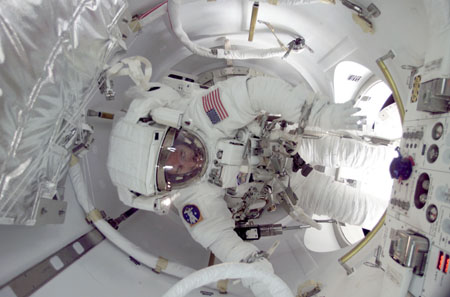airlock

Astronaut in one of the airlocks of the International Space Station.
An airlock is an airtight chamber or passageway with two, hermetically-sealed doors to allow people and materials to pass between environments having different air pressures. Air locks are used on caissons facilitating underwater excavation, on spacecraft, as submarine escape hatches, and in industrial high-vacuum installations.
In the case of an airlock in a manned space vehicle, such as the Space Shuttle or a space station, the airlock allows astronauts to leave or enter the spacecraft without depressurizing the whole vehicle. The typical sequence of steps for going out of a spacecraft in orbit is (1) astronaut, wearing a spacesuit, enters the airlock through its inner door; (2) the airlock is depressurized by transferring its air to the spacecraft; (3) the inner door is closed, which seals the spacecraft's atmosphere; (4) the airlock's outer door is opened into space, and the astronaut exits. The reverse sequence applies when the astronaut returns.


